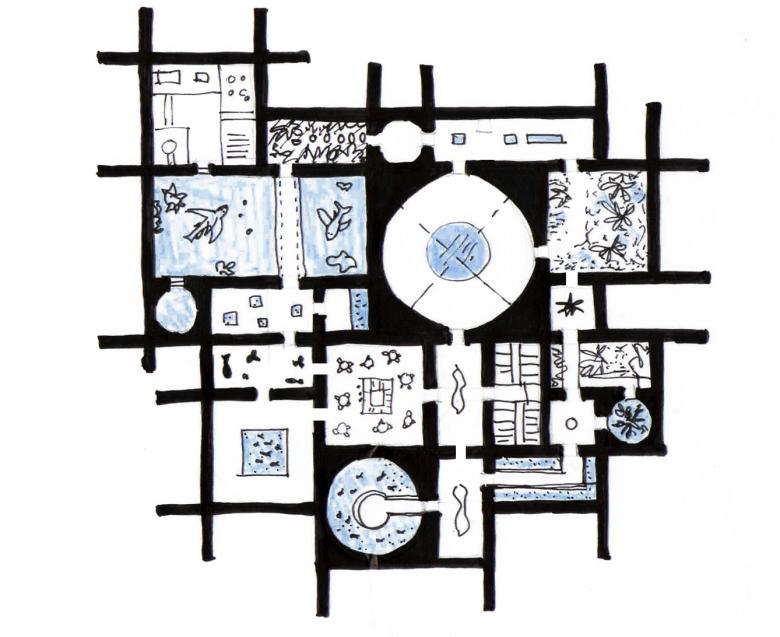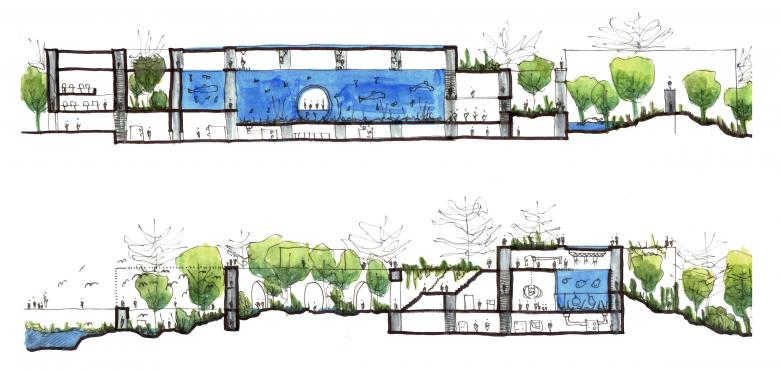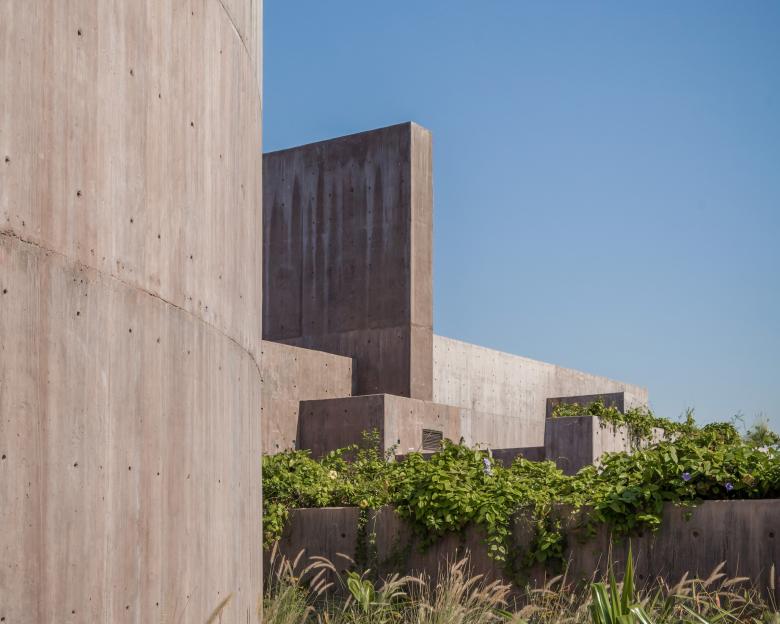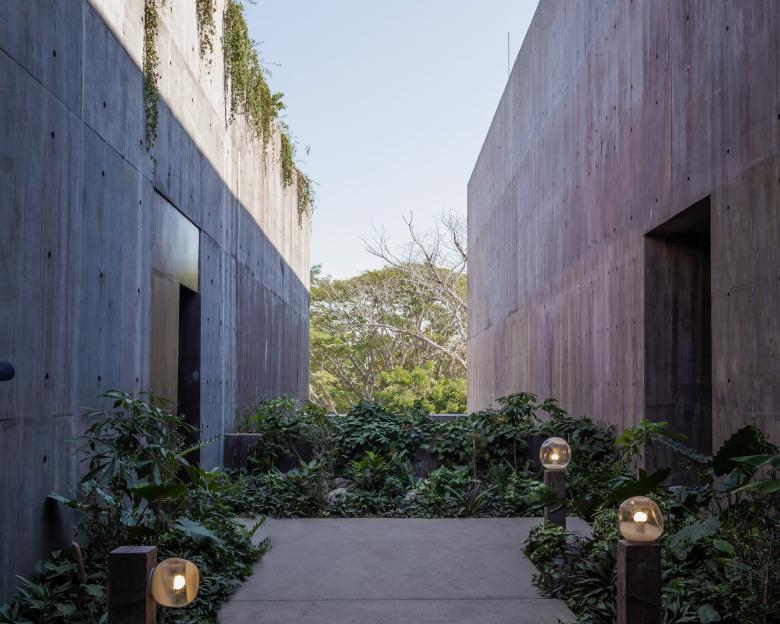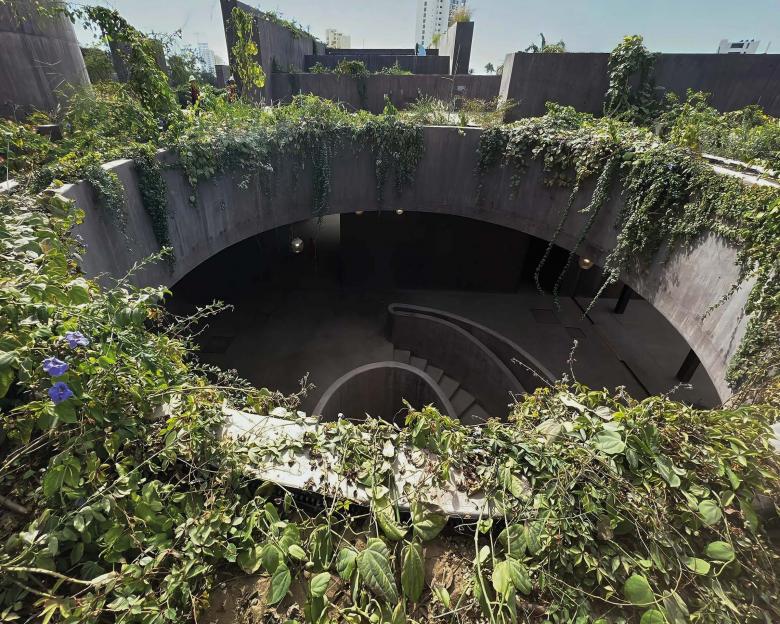Sea of Cortez Research Center by Tatiana Bilbao Estudio
Part of the Natural World
The Centro de Investigación del Mar de Cortés (Sea of Cortez Research Center) opened in Mazatlán, Mexico, at the end of May. Located in Parque Central Mazatlán, the impressive building was designed by Tatiana Bilbao Estudio.
The area around the city of Mazatlán in the Mexican state of Sinaloa is popular because of the beauty of the country's Pacific coastline and the city's offshore islands. When the most prominent female architect in the country, Tatiana Bilbao, was asked to design the Sea of Cortez Research Center there, she began by imagining how people in the year 2289 would discover “a building that was built in 2023 without knowing why or what for.” Her studio's design is an abstract play of geometric shapes — a strong contract to the park's lush vegetation and the vegetation upon the building itself.
Bilbao’s design is comparable to some of the most iconic works of Mexican modernism, especially Luis Barragán’s houses around Guadalajara. But, unlike Barragán’s "emotional architecture" that conveys serenity through bright colors, Bilbao’s design for the oceanic research center recalls architects like Tadao Ando in its preference for exposed concrete. The use of exposed béton brut, together with a dramatic play of light and shadow across their surfaces, give Bilbao’s design its power. In her imagination, “in 2100 the sea water rose so high that it flooded the site” only to recede the next century. However, “life remained there.”
The architect's written description continues: “We opened paths, generated stairs and opened possibilities to meet a world that had taken over this space, a world that remains hidden.” This is a strong narrative that Bilbao threads throughout the building. Bilbao wants the building to convey “that we, as human beings, are just another part of the natural world” and “that the idea that we can control it is what is expelling us from it.” Bold, but not as farfetched as her claim that “architecture can become a platform to integrate us back into our ecosystem” so “we can remain on this planet.”
That the project was conceived as “a ruin that was invaded by nature and has left in its wake a window to a hidden world” is appropriate, if somewhat cliché, given how the Mayan, Aztec, and other ancient pyramids in Mexico are likewise ruins partially reclaimed by vegetation. Also appropriate is the location of the research center in Mazatlán, which is located directly east of the southern tip of the Baja California peninsula and at the immense opening of the body of water that separates Baja from mainland Mexico: the Sea of Cortez (aka Gulf of California), one of the richest ecosystems in the world.
Located in Mazatlan’s Central Park, the Sea of Cortez Research Center offers an experience of the sea's marine and coastal ecosystems through didactic programs and exhibitions. The building also contains laboratories, auditoriums, public plazas, offices, and conservation areas. The interaction between interior and exterior blurs public and private space. The landscaping, designed by Taller de Paisaje Entorno, is an essential part of this impressive new architectural magnet on Mexico’s Pacific Coast.



